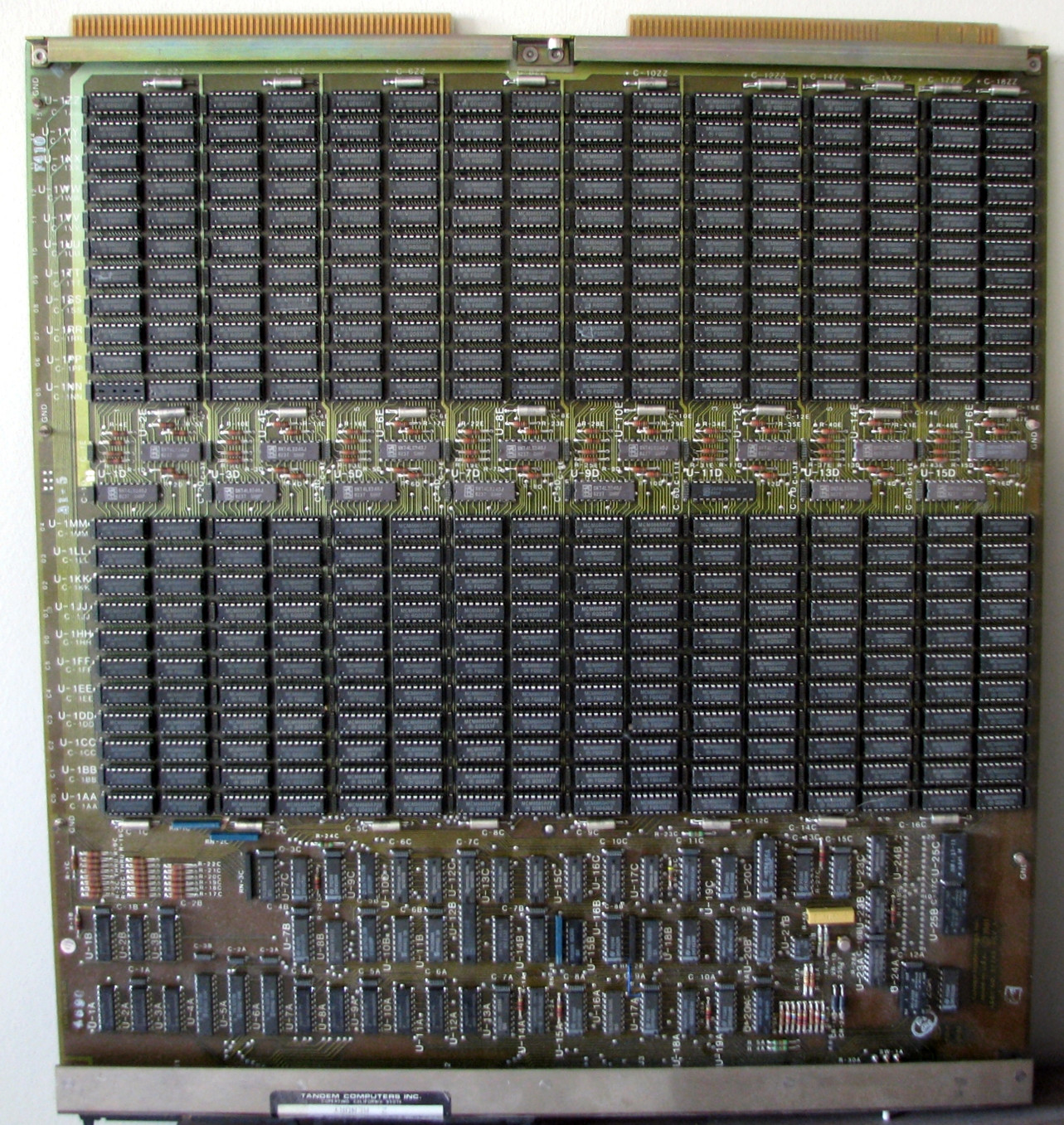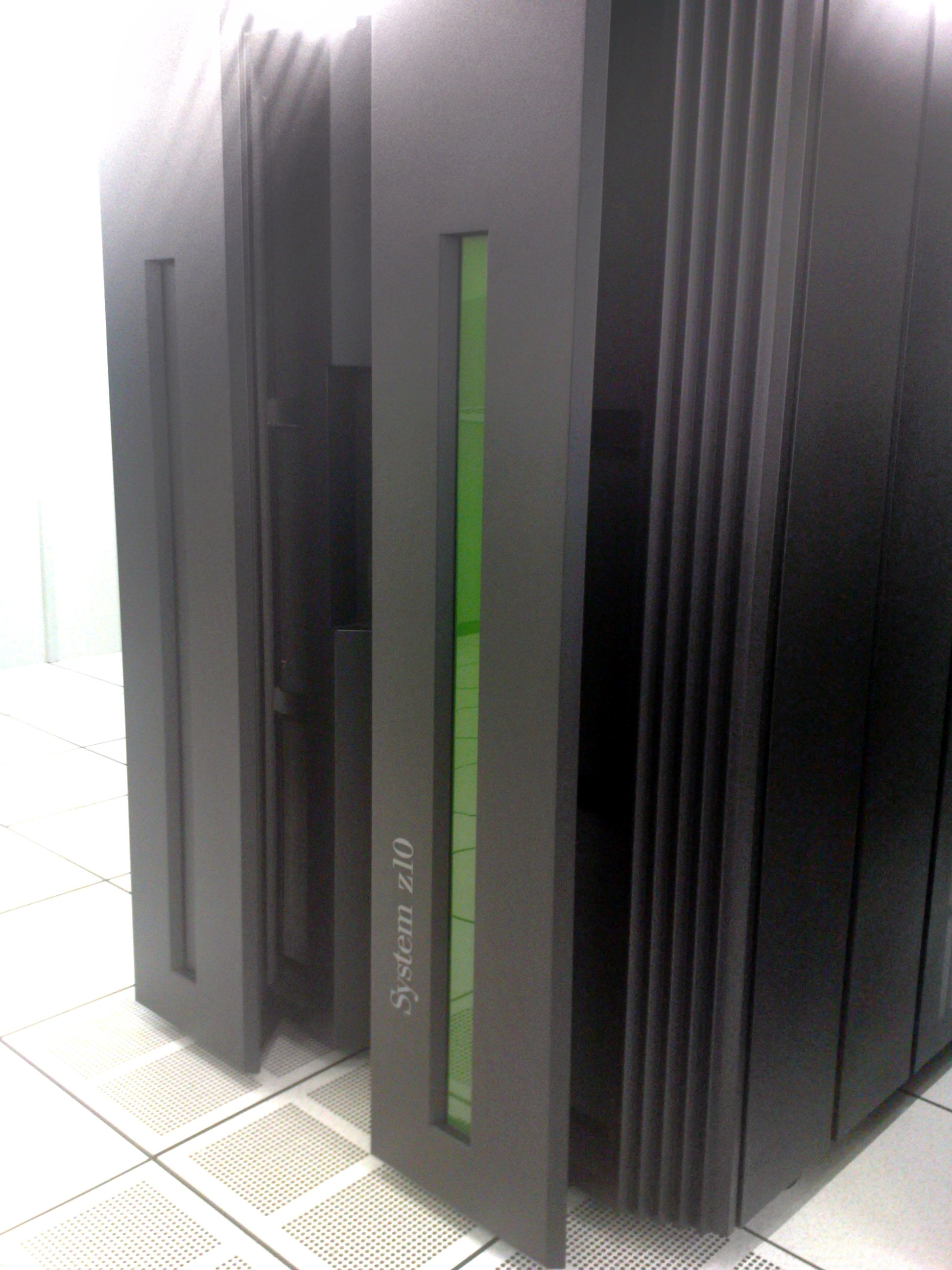|
BASE24
: ''For the number system, see Base 24.'' BASE24 is a series of applications produced by ACI Worldwide, Inc. that support payment systems used by large financial institutions. BASE24-atm BASE24-atm is an EFT processing and switching system that provides ATM support and management including transaction routing and authorization, electronic data interchange, settlement, reporting, network control, and stored-value card functionality. BASE24-eps BASE24-eps, formerly BASE24-es, is a payment engine that the financial payments industry uses. It is used to acquire, authenticate, route, switch, and authorize financial transactions across multiple channels. It is supported by mainframe computer platforms including z/OS, HP NonStop (Tandem), UNIX (IBM pSeries, Sun Sparc) and Linux (x86_64). BASE24-infobase BASE24-infobase is used to collect ATM transactions, including EFT payments, and distribute operational data, such as automated software updates. It operates on HP NonStop a ... [...More Info...] [...Related Items...] OR: [Wikipedia] [Google] [Baidu] |
Base 24
There are many different numeral systems, that is, writing systems for expressing numbers. By culture / time period By type of notation Numeral systems are classified here as to whether they use positional notation (also known as place-value notation), and further categorized by radix or base. Standard positional numeral systems The common names are derived somewhat arbitrarily from a mix of Latin and Greek, in some cases including roots from both languages within a single name. There have been some proposals for standardisation. Non-standard positional numeral systems Bijective numeration Signed-digit representation Negative bases The common names of the negative base numeral systems are formed using the prefix ''nega-'', giving names such as: Complex bases Non-integer bases ''n''-adic number Mixed radix * Factorial number system * Even double factorial number system * Odd double factorial number system * Primorial number system * Fibonorial numb ... [...More Info...] [...Related Items...] OR: [Wikipedia] [Google] [Baidu] |
Tandem Computers
Tandem Computers, Inc. was the dominant manufacturer of fault-tolerant computer systems for Automated teller machine, ATM networks, banks, stock exchanges, telephone switching centers, and other similar commercial transaction processing applications requiring maximum uptime and zero data loss. The company was founded by Jimmy Treybig in 1974 in Cupertino, California. It remained independent until 1997, when it became a server division within Compaq. It is now a server division within Hewlett Packard Enterprise, following Hewlett-Packard's acquisition of Compaq and the split of Hewlett Packard into HP Inc. and Hewlett Packard Enterprise. Tandem's NonStop (server computers), NonStop systems use a number of independent identical processors and redundant storage devices and controllers to provide automatic high-speed "failover" in the case of a hardware or software failure. To contain the scope of failures and of corrupted data, these multi-computer systems have no shared central comp ... [...More Info...] [...Related Items...] OR: [Wikipedia] [Google] [Baidu] |
Internet
The Internet (or internet) is the global system of interconnected computer networks that uses the Internet protocol suite (TCP/IP) to communicate between networks and devices. It is a '' network of networks'' that consists of private, public, academic, business, and government networks of local to global scope, linked by a broad array of electronic, wireless, and optical networking technologies. The Internet carries a vast range of information resources and services, such as the inter-linked hypertext documents and applications of the World Wide Web (WWW), electronic mail, telephony, and file sharing. The origins of the Internet date back to the development of packet switching and research commissioned by the United States Department of Defense in the 1960s to enable time-sharing of computers. The primary precursor network, the ARPANET, initially served as a backbone for interconnection of regional academic and military networks in the 1970s to enable resource shari ... [...More Info...] [...Related Items...] OR: [Wikipedia] [Google] [Baidu] |
Firewall (computing)
In computing, a firewall is a network security system that monitors and controls incoming and outgoing network traffic based on predetermined security rules. A firewall typically establishes a barrier between a trusted network and an untrusted network, such as the Internet. History The term ''firewall'' originally referred to a wall intended to confine a fire within a line of adjacent buildings. Later uses refer to similar structures, such as the metal sheet separating the engine compartment of a vehicle or aircraft from the passenger compartment. The term was applied in the late 1980s to network technology that emerged when the Internet was fairly new in terms of its global use and connectivity. The predecessors to firewalls for network security were routers used in the late 1980s. Because they already segregated networks, routers could apply filtering to packets crossing them. Before it was used in real-life computing, the term appeared in the 1983 computer-hacking movie ' ... [...More Info...] [...Related Items...] OR: [Wikipedia] [Google] [Baidu] |
Data Integrity
Data integrity is the maintenance of, and the assurance of, data accuracy and consistency over its entire Information Lifecycle Management, life-cycle and is a critical aspect to the design, implementation, and usage of any system that stores, processes, or retrieves data. The term is broad in scope and may have widely different meanings depending on the specific context even under the same general umbrella of computing. It is at times used as a proxy term for data quality, while data validation is a prerequisite for data integrity. Data integrity is the opposite of data corruption. The overall intent of any data integrity technique is the same: ensure data is recorded exactly as intended (such as a database correctly rejecting mutually exclusive possibilities). Moreover, upon later Data retrieval, retrieval, ensure the data is the same as when it was originally recorded. In short, data integrity aims to prevent unintentional changes to information. Data integrity is not to be confus ... [...More Info...] [...Related Items...] OR: [Wikipedia] [Google] [Baidu] |
NonStop (server Computers)
NonStop is a series of server computers introduced to market in 1976 by Tandem Computers Inc., beginning with the NonStop product line, which was followed by the Hewlett-Packard Integrity NonStop product line extension. It is currently offered by Hewlett Packard Enterprise since Hewlett-Packard Company's split in 2015. Because NonStop systems are based on an integrated hardware/software stack, HPE also developed the NonStop OS operating system for them. NonStop systems are, to an extent, self-healing. To circumvent single points of failure, they are equipped with almost all redundant components. When a mainline component fails, the system automatically falls back to the backup. These systems are often used by banks, stock exchanges, payment applications, retail companies, energy and utility services, healthcare organizations, manufacturers, telecommunication providers, transportation and other enterprises requiring extremely high uptime. History Originally introduced in 197 ... [...More Info...] [...Related Items...] OR: [Wikipedia] [Google] [Baidu] |
Electronic Funds Transfer
Electronic funds transfer (EFT) is the electronic transfer of money from one bank account to another, either within a single financial institution or across multiple institutions, via computer-based systems, without the direct intervention of bank staff. According to the United States Electronic Fund Transfer Act of 1978 it is "a funds transfer initiated through an electronic terminal, telephone, computer (including on-line banking) or magnetic tape for the purpose of ordering, instructing, or authorizing a financial institution to debit or credit a consumer's account". EFT transactions are known by a number of names across countries and different payment systems. For example, in the United States, they may be referred to as "electronic checks" or "e-checks". In the United Kingdom, the term "bank transfer" and "bank payment" are used, in Canada, " e-transfer" is used, while in several other European countries " giro transfer" is the common term. Types EFTs include, but ar ... [...More Info...] [...Related Items...] OR: [Wikipedia] [Google] [Baidu] |
Automated Teller Machine
An automated teller machine (ATM) or cash machine (in British English) is an electronic telecommunications device that enables customers of financial institutions to perform financial transactions, such as cash withdrawals, deposits, funds transfers, balance inquiries or account information inquiries, at any time and without the need for direct interaction with bank staff. ATMs are known by a variety of names, including automatic teller machine (ATM) in the United States (sometimes redundantly as "ATM machine"). In Canada, the term ''automated banking machine'' (ABM) is also used, although ATM is also very commonly used in Canada, with many Canadian organizations using ATM over ABM. In British English, the terms ''cashpoint'', ''cash machine'' and ''hole in the wall'' are most widely used. Other terms include ''any time money'', ''cashline'', ''tyme machine'', ''cash dispenser'', ''cash corner'', ''bankomat'', or ''bancomat''. ATMs that are not operated by a financial i ... [...More Info...] [...Related Items...] OR: [Wikipedia] [Google] [Baidu] |
Z/OS
z/OS is a 64-bit operating system for IBM z/Architecture mainframes, introduced by IBM in October 2000. It derives from and is the successor to OS/390, which in turn was preceded by a string of MVS versions.Starting with the earliest: * OS/VS2 Release 2 through Release 3.8 * MVS/System Extensions (MVS/SE) * MVS/System Product (MVS/SP) Version 1 * MVS/System Product Version 2 (MVS/Extended Architecture, MVS/XA) * MVS/System Product Version 3 (MVS/Enterprise Systems Architecture, MVS/ESA) * MVS/ESA SP Version 4 * MVS/ESA SP Version 5 Like OS/390, z/OS combines a number of formerly separate, related products, some of which are still optional. z/OS has the attributes of modern operating systems, but also retains much of the older functionality originated in the 1960s and still in regular use—z/OS is designed for backward compatibility. Major characteristics z/OS supportsSome, e.g., TSO/E, are bundled with z/OS, others, e.g.,CICS, are separately priced. stable mainframe fac ... [...More Info...] [...Related Items...] OR: [Wikipedia] [Google] [Baidu] |
Mainframe Computer
A mainframe computer, informally called a mainframe or big iron, is a computer used primarily by large organizations for critical applications like bulk data processing for tasks such as censuses, industry and consumer statistics, enterprise resource planning, and large-scale transaction processing. A mainframe computer is large but not as large as a supercomputer and has more processing power than some other classes of computers, such as minicomputers, servers, workstations, and personal computers. Most large-scale computer-system architectures were established in the 1960s, but they continue to evolve. Mainframe computers are often used as servers. The term ''mainframe'' was derived from the large cabinet, called a ''main frame'', that housed the central processing unit and main memory of early computers. Later, the term ''mainframe'' was used to distinguish high-end commercial computers from less powerful machines. Design Modern mainframe design is characterized less b ... [...More Info...] [...Related Items...] OR: [Wikipedia] [Google] [Baidu] |
Stored-value Card
A stored-value card (SVC) is a payment card with a monetary value stored on the card itself, not in an external account maintained by a financial institution. This means no network access is required by the payment collection terminals as funds can be withdrawn and deposited straight from the card. Like cash, payment cards can be used anonymously as the person holding the card can use the funds. They are an electronic development of token coins and are typically used in low-value payment systems or where network access is difficult or expensive to implement, such as parking machines, public transport systems, closed payment systems in locations such as ships or within companies. Stored-value cards differ from debit cards, where money is on deposit with the issuer, and credit cards which are subject to credit limits set by the issuer and are connected to accounts at financial institutions. Another difference between stored-value cards and debit and credit cards is that debit and c ... [...More Info...] [...Related Items...] OR: [Wikipedia] [Google] [Baidu] |




